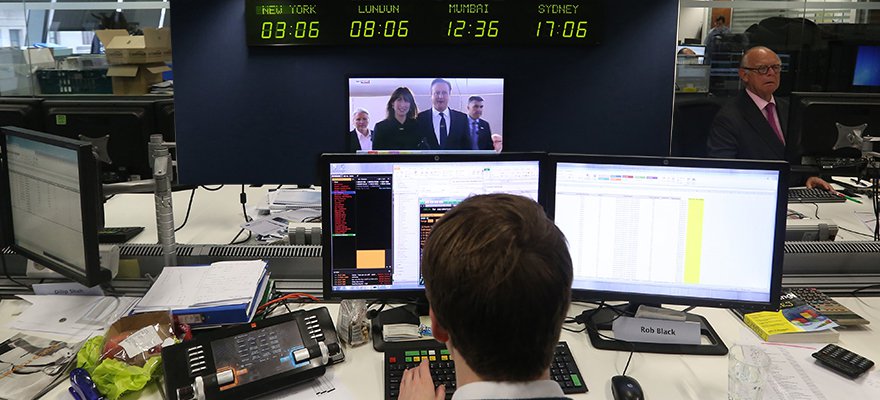This article was written by James Sinclair of Trade Finance Global.
Invoice finance has seen a boom in recent months. Invoice finance encompasses factoring and invoice discounting, which businesses can use to release working capital tied up in invoices which could take up to 90 days to receive.
Join the industry leaders at the Finance Magnates London Summit, 14-15 November, 2016. Register here!
Recent news from the Asset Based Finance Association reported a 5% increase in invoice financing in the first half of 2016, in comparison to 2015, exceeding £20.3 billion this year, an early indication that Brexit fears aren't affecting commercial finance.
There are certain invoice finance mistakes that often cause SMEs pain and further challenges. If avoided, invoice finance could be a suitable tool for easing cash flow and helping minimize risks associated with late Payments .
1. Not reading the Ts and Cs, and misunderstanding the charge structure
Ever clicked 'I agree' without actually reading the terms and conditions? For invoice finance, this isn't a mistake that you want to make. If the fine clauses in the fine print are not looked over with a fine tooth comb, you could be stung with charges that you might not have been aware of.
One common misconception with charges are service charges and discount rate. The service charge, like the name, is a fee for borrowing money, normally based on the total value of the invoice, whereas the discount rate is the daily interest rate charged on what is borrowed, which goes down the faster you pay back.
Some less scrupulous banks might add on pesky fees for credit checks and early repayment, so watch out.
2. Getting the details on the invoice wrong
Companies that are new to invoice factoring might forget to make sure their clients' direct invoices are to the factoring company (in the case of invoice factoring), thereby possibly causing 'late payment' factor and incurring fees.
Further to this, assuming that the customers have received, understood and will pay the invoice once it has been 'sent' from your inbox is risky; following up, making sure the payment terms are correct, and the details (theirs and yours) are too will help prevent any unwanted hiccups in the invoicing process.
3. Forgetting about FX movements
Although invoice finance can provide some cashflow certainties in a business, external factors such as volatile exchange rates, especially for those acquiring goods or exporting overseas, turbulent FX markets can quickly eat into margins.
Factoring and foreign exchange volatility management do actually come into play, and it's often handy to talk to a currency broker to discuss requirements and consider forwards or contracts to protect your business revenue.
This article was written by James Sinclair of Trade Finance Global.
Invoice finance has seen a boom in recent months. Invoice finance encompasses factoring and invoice discounting, which businesses can use to release working capital tied up in invoices which could take up to 90 days to receive.
Join the industry leaders at the Finance Magnates London Summit, 14-15 November, 2016. Register here!
Recent news from the Asset Based Finance Association reported a 5% increase in invoice financing in the first half of 2016, in comparison to 2015, exceeding £20.3 billion this year, an early indication that Brexit fears aren't affecting commercial finance.
There are certain invoice finance mistakes that often cause SMEs pain and further challenges. If avoided, invoice finance could be a suitable tool for easing cash flow and helping minimize risks associated with late Payments .
1. Not reading the Ts and Cs, and misunderstanding the charge structure
Ever clicked 'I agree' without actually reading the terms and conditions? For invoice finance, this isn't a mistake that you want to make. If the fine clauses in the fine print are not looked over with a fine tooth comb, you could be stung with charges that you might not have been aware of.
One common misconception with charges are service charges and discount rate. The service charge, like the name, is a fee for borrowing money, normally based on the total value of the invoice, whereas the discount rate is the daily interest rate charged on what is borrowed, which goes down the faster you pay back.
Some less scrupulous banks might add on pesky fees for credit checks and early repayment, so watch out.
2. Getting the details on the invoice wrong
Companies that are new to invoice factoring might forget to make sure their clients' direct invoices are to the factoring company (in the case of invoice factoring), thereby possibly causing 'late payment' factor and incurring fees.
Further to this, assuming that the customers have received, understood and will pay the invoice once it has been 'sent' from your inbox is risky; following up, making sure the payment terms are correct, and the details (theirs and yours) are too will help prevent any unwanted hiccups in the invoicing process.
3. Forgetting about FX movements
Although invoice finance can provide some cashflow certainties in a business, external factors such as volatile exchange rates, especially for those acquiring goods or exporting overseas, turbulent FX markets can quickly eat into margins.
Factoring and foreign exchange volatility management do actually come into play, and it's often handy to talk to a currency broker to discuss requirements and consider forwards or contracts to protect your business revenue.

















